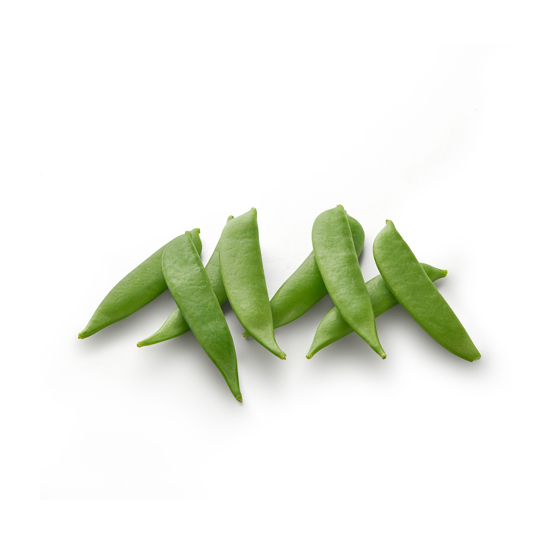Storage advice
Like other beans, store sugar snaps in the fridge.
Sugar by name, sugar by nature

With a name like that, there's no mistake about the taste of these beans: delectably sweet! Sugar snaps taste a little like mangetout. There is a logical explanation: sugar snaps are not a bean that occurs naturally, they are a cross between peas and mangetout - or snow peas. The difference with the better-known mangetout is visible at once - sugar snaps are thicker.
This vegetable has a relatively short history, as it only came into existence in the early 1950s. In the shop, sugar snaps also go by the name of snap peas. You can eat sugar snaps whole. And did you know that EAT ME sugar snaps also taste amazing raw? They make a super and very responsible alternative to a sweet snack.
Do you need some inspiration for your sugar snaps? Try them in a dish with shiitake and rice. Or combine with Parmesan cheese. Or stir-fry, with carrots added for an attractive colour contrast. Healthy snack? Perfect- just enjoy me raw!
You can cook, bake or steam EAT ME sugar snaps. Simply rinse beforehand.


Like other beans, store sugar snaps in the fridge.
Sugar snaps prefer to grow in warm regions, such as Central and South America (Guatemala) and Africa (Kenya, Egypt and Zimbabwe). The beans growing on climbing vines. Canes support the plants as they grow. Three months after sowing, harvesting can begin. Sugar snaps are picked by hand over a period of 6 weeks.
